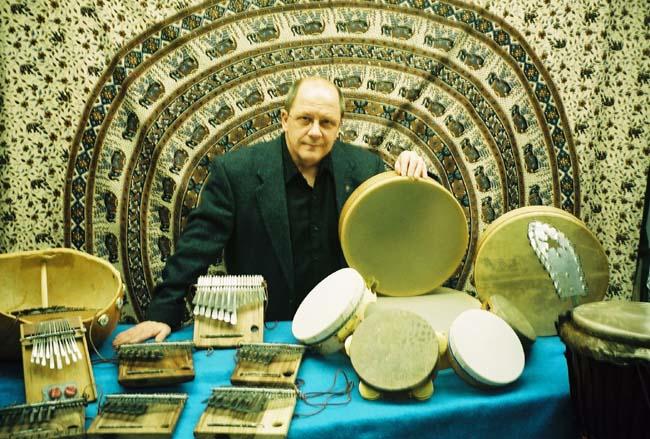Percussion Ensemble explores world music theme
Greg Beyer | Courtesy photo
B. Michael Williams, seen here in this undated press photo, will be the special guest of the NIU Percussion Ensamble at 8 p.m. tonight in the Music Building’s Boutell Memorial Concert Hall.
April 1, 2012
Percussionists are often in the background, felt more than heard.
The Percussion Ensemble changes that. By placing only percussion instruments on the stage, the ensemble pushes the boundaries of the audiences’ preconceived notions of what these instruments can do.
“Percussion Ensemble has almost as many instrumental colors as a wind ensemble,” said Robert Chappell, coordinator of strings, wind and percussion in the School of Music. “We have metal, skin sounds and many other unique sounds.”
This concert’s world music theme is one of three the percussion ensemble explores in semester cycles. Other musical emphases are keyboard percussion and classical and contemporary music.
“Given the world music emphasis of this program, many instruments from around the world will be on hand,” said director Greg Beyer. “Indian tabla, Cuban conga, Brazilian berimbau, Zimbabwean mbira, and of course marimbas, vibraphones and drumsets.”
Among the student percussionists, who are all percussion majors, will be special guest artist B. Michael Williams.
“B. Michael Williams, professor of percussion at Winthrop University, is an expert frame drummer, djembe player and Zimbabwean mbira, or thumb piano, performer,” Beyer said. “He will be featured throughout the program in very interesting ways.”
The concert is also serving as a farewell to Chappell, who will retire at the end of this year.
Beyer is certain Chappell will make appearances in the future, and said he has had a huge impact on the percussion program at NIU.
Despite the interesting and unfamiliar instruments present, there are still some challenges in working with a percussion ensemble. Beyer said despite the differences between wind and percussion instruments, the players find ways to make the music compelling.
“If there is a pitfall to percussion playing, it may be that we are not obliged to breathe through our instruments to make sound,” Beyer said. “This sometimes makes for musical expression that can seem mechanical if we don’t find other ways to imbue life and motion into the music.”







